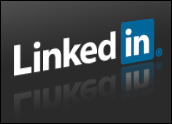Microsoft’s acquisition of LinkedIn for more than US$26 billion has created quite a stir — at least in my world. According to Ross Mayfield, a colleague at the Enterprise Irregulars, Ellen Levy reported that the deal can boast a number of superlatives if you look at it right:
- the largest sale of a consumer Internet company in history;
- the largest sale of an enterprise software/cloud company in history;
- the third-largest sale of a technology company since 2001; and
- the largest acquisition ever made by Microsoft.
What’s interesting to me is how poorly the social networking industry is doing overall.
Social has almost reached hobby status because there are so few companies making money. For instance, Twitter has lost $2 billion since 2011, and it has never turned a profit. Facebook seems the healthiest.
The situation is exacerbated by Metcalf’s Law, which states that the value of a network is directly proportional to the number of nodes, or in this case, users. People want to be on the biggest social networks because that’s where their friends are. While this makes perfect sense, it has a consolidating effect on the market.
The Who-Will-Pay Conundrum
The situation could be remedied, in part, by better interoperability. Don’t look for that any time soon, as there’s no logical reason for the winners to help the also-rans. Even interoperability wouldn’t do anything about the revenue problem, though.
Most social networks seek revenue through some kind of advertising model — but again, that works well for the winners but it’s tougher than rolling together rent and alimony for the others.
Most of us don’t follow ads, or we certainly don’t do it often enough. Advertising on social media, despite its promise of better targeting, largely has replaced the broadcast advertising of the 20th century.
In short, social media has become the utility that everyone wants to use and nobody wants to pay for. Unless the industry comes up with a better revenue model, we’ll likely reach a duopoly market, which will throttle service and introduce charging for what you get — that’s kind of like the airline model today.
What to do? I think it’s impractical to expect that all the struggling social networks will find homes in larger software companies. Some are going to evaporate. But what if social networks could adopt a different revenue model, such as the subscription option?
Subscriptions are not new, and it would have been nice if the social networks had started out that way instead of going for market share — it was necessary, given the advertising model involved. Subscriptions could have let the networks grow slowly but profitably, avoiding what we have today: zombie social companies.
That’s over, though, and speculation about the past is a useless exercise except as post mortems in B-school. For now, the social networks have to get on more solid footings and develop revenue models that are sustainable.
Failure Is Not an Option
It’s amazing to think that just about 10 years ago, social networks were getting going amid significant hoopla. Paul Greenberg made social the foundation of CRM, and Salesforce christened itself as “reborn social” — then everyone else piled on.
Today, CRM depends a lot on social networks as a source of customer data and customer communication in marketing, sales and service. I’ve likened social networks in CRM to a form of community. Social is now integral to CRM, so it’s important to ensure its health.
That said, social networks’ big advantage is their independence and ability to take on all those who wish admission. Having a parent company own a network — as Microsoft now owns LinkedIn — is problematic for the likes of SAP, Oracle and Salesforce, which compete at the CRM level, and in some cases HR and HCM.
It’s not the same as buying another app company. Social networks need to be independent common carriers, so figuring out a better and more predictable business model for social is a pressing concern. Even in its still-nascent state, social is too big to fail, and we can’t afford to see this market consolidate as so many others have.


























































Social CRM
See all Social CRM